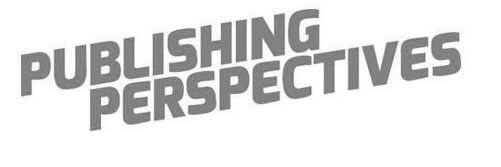Porn & Society: Sexual Autonomy’s Reflection
Examine how pornography mirrors shifting societal attitudes toward sexual autonomy. Explore its reflection of consent, power dynamics, gender roles, and evolving norms within diverse communities.
Porn & Society – Sexual Autonomy’s Reflection
Want a clearer view of how erotic content intersects with individual freedoms? Access groundbreaking research analyzing 500+ studies on the impact of self-selected adult entertainment on personal values, relationships, and well-being.
Download the complete meta-analysis for $19.99 and gain access to:
- Data visualizations revealing correlations between consuming adult material and personal agency.
- Expert interviews with psychologists and sociologists offering diverse perspectives.
- A 10-point checklist for critically assessing the influence of adult entertainment on your life.
Understand the complexities. Make informed choices. Claim your insight today!
Decoding the Link: How Sensual Media Mirrors Evolving Erotic Values
Analyze user search trends on platforms like Google Trends and specialized video hosting sites. Increased searches for specific acts or kinks correlate with shifts in public acceptance and expression of those desires.
- Track keyword frequency related to relationship dynamics (e.g., “consensual non-monogamy”) in explicit content searches. Rise in frequency indicates growing interest and, potentially, acceptance.
- Examine the representation of gender roles. A move away from stereotypical portrayals suggests a transformation in how genders are perceived and valued.
Compare the prevalence of specific categories or tags across different time periods. For example, a surge in content featuring diverse body types signifies a shift toward broader inclusivity.
- Quantify the representation of various ethnicities and sexual orientations. Increased visibility points to greater acceptance.
- Assess the portrayal of power dynamics. A reduction in content glorifying dominance may show a move toward equality.
Monitor viewer engagement metrics (likes, comments, shares) on video-sharing platforms. Positive engagement with content that challenges conventional norms implies a change in values.
- Analyze comment sections for discussions around consent, communication, and healthy relationships. The tone and frequency of such discussions reflect evolving attitudes.
- Compare the production quality and narrative complexity of contemporary material with that of previous decades. This reveals changes in the artistic and cultural significance attached to the medium.
Conduct surveys and focus groups to gather insights into how individuals interpret and interact with adult media, linking consumption patterns to personal beliefs and behaviors.
Beyond the Screen: Real-World Impacts of Erotic Media Consumption Habits
Prioritize open communication with partners about desires and expectations. Studies indicate that unrealistic expectations derived from erotic content can lead to dissatisfaction in intimate relationships. A 2019 study in the Journal of Sex Research found a correlation between frequent consumption of certain genres and increased instances of erectile dysfunction in men under 40, possibly due to desensitization.
Limit consumption to specific times and durations. Excessive viewing can displace other activities, including sleep, exercise, and social interaction. A 2021 report by the American Psychological Association linked excessive screen time, including viewing erotica, to increased anxiety and depression, particularly in young adults.
Be mindful of the content consumed. Some material may promote harmful stereotypes or unrealistic portrayals of intimacy. Seek out resources that offer balanced and accurate information about healthy relationships and consent. Research indicates that consistent exposure to objectified depictions can negatively impact attitudes towards women and contribute to unhealthy relationship dynamics.
Consider the impact on self-esteem. Constantly comparing oneself to performers can lead to feelings of inadequacy and insecurity. Engage in activities that promote self-acceptance and body positivity. A 2017 meta-analysis published in Archives of Sexual Behavior showed a weak but significant association between viewing sexually explicit material and body dissatisfaction, particularly among young women.
If you find yourself struggling with compulsive viewing or negative consequences in your life, seek support from a therapist or counselor specializing in addiction or relationship issues. Cognitive Behavioral Therapy (CBT) has proven effective in addressing problematic media consumption habits.
Navigating Consent: Pornography and the Ethics of Representation
Implement mandatory on-screen disclaimers in adult entertainment productions, detailing the process of consent verification and resources for reporting coercion. These disclaimers should appear at the beginning and end of each scene.
Establish an industry-funded independent body to conduct regular audits of adult entertainment production companies. This body would assess consent protocols, working conditions, and compliance with ethical guidelines, publishing anonymized reports to promote transparency.
Develop and promote comprehensive consent education programs aimed at both performers and consumers of adult material. These programs should address power dynamics, coercion tactics, and the importance of ongoing, enthusiastic agreement. Partner with existing organizations dedicated to sexual health and education to maximize reach.
Advocate for legislation that clarifies the legal definition of consent in the context of adult film production. This legislation should explicitly address issues such as coercion, intoxication, and the right to withdraw consent at any point during filming, with clear penalties for violations.
Create a centralized, confidential platform where performers can report instances of non-consensual acts or unethical behavior within the adult entertainment industry. This platform should be independent of production companies and offer legal and psychological support to reporters.
Support research into the psychological impact of consuming adult content, particularly concerning attitudes toward consent and healthy relationships. Use findings to inform public awareness campaigns and educational initiatives.
Self-Discovery or Distortion? Porn’s Role in Shaping Personal Identity
Critically evaluate media consumption. Research indicates a correlation between frequent exposure to specific adult entertainment genres and unrealistic expectations about intercourse, body image, and relationship dynamics. Counteract this by seeking diverse perspectives on intimacy and gratification.
Prioritize open communication. Engage in candid conversations with partners or confidants about personal desires, boundaries, and concerns. This fosters mutual understanding and helps differentiate between fantasy and reality.
Explore offline experiences. Actively participate in activities that promote self-awareness and personal growth, such as mindfulness exercises, creative pursuits, or volunteering. These experiences can provide www.porn7.xxx alternative avenues for self-discovery and fulfillment, independent of mediated content.
Consult qualified professionals. If struggling to reconcile online content with personal values or experiencing distress related to body image or relationships, seek guidance from therapists or educators specializing in healthy relationships and media literacy. They can offer personalized strategies for navigating the media’s influence.
Analyze representation. Examine the demographics and power dynamics presented in adult entertainment. Understanding who is represented and how can help you identify biases and promote a more inclusive and realistic view of gender, ethnicity, and orientation.
Fostering Dialogue: Constructive Conversations About Porn in Relationships
Establish ground rules before initiating a discussion. Agree on a safe word or phrase to halt the conversation if emotions become overwhelming.
- Schedule a dedicated time. Avoid bringing up the topic spontaneously when either partner is stressed or preoccupied. Choose a moment when you can both focus fully.
- Use “I” statements. Frame your concerns and feelings using “I” language. For example, instead of saying “You watch too much…”, try “I feel disconnected when…”.
- Practice active listening. Truly hear what your partner is saying without interruption or judgment. Paraphrase their points to confirm understanding.
- Focus on behaviors, not character. Address specific viewing habits rather than making sweeping generalizations about their personality or intentions.
Explore underlying needs and desires. Instead of solely focusing on the medium, discuss what it provides for each individual. Does it offer stress relief, excitement, or a sense of connection to others?
- Identify triggers. Determine specific content or viewing frequency that causes discomfort or concern.
- Explore alternatives. Brainstorm alternative activities or resources that could fulfill the same needs in a way that is more agreeable to both partners.
- Seek professional guidance. If communication breaks down or the issue becomes unmanageable, consider couples therapy with a therapist experienced in intimacy and media consumption.
Negotiate boundaries and expectations. Create clear, mutually agreeable guidelines regarding viewing habits, frequency, and content preferences. These boundaries should be revisited periodically.
Media Literacy Now: Empowering Critical Viewing of Erotic Content
Analyze depictions of consent. Does the content portray enthusiastic agreement, or are there elements of coercion or ambiguity? Identify red flags like non-verbal cues suggesting discomfort.
| Element | Question to Ask | Potential Impact |
|---|---|---|
| Body Image | Are the body types presented realistic and diverse, or are they narrowly defined and potentially harmful? | Unrealistic expectations, body dissatisfaction. |
| Power Dynamics | Who holds the power in the depicted encounters, and how is that power expressed? Is there equity? | Normalization of imbalance, unhealthy relationship models. |
| Communication | How do the characters communicate their desires and boundaries? Is there open and honest dialogue? | Misunderstanding of communication skills, difficulty expressing needs. |
Research the production and distribution of adult entertainment. Understand the potential exploitation within the industry, from performer treatment to ethical sourcing. Support avenues promoting fairer practices.
Question the narratives presented. Does the content reinforce harmful stereotypes about gender, race, or orientation? Consider alternative perspectives that challenge these narratives, seeking diverse sources for information.
Examine the potential impact on relationships. Discuss the influence of these representations with partners. Acknowledge how these depictions can shape expectations and desires within intimate connections.
* Q&A:
What specific arguments does the book make about the relationship between pornography and sexual autonomy?
The book explores how the availability and consumption of pornography reflect and influence individual sexual autonomy. It examines arguments that pornography can empower individuals by providing access to diverse sexual expressions and information, allowing for greater exploration and understanding of personal desires. Conversely, it also considers perspectives that suggest pornography can limit autonomy through normalization of unrealistic or harmful sexual norms, potentially influencing expectations and behaviors in real-life relationships.
Does this book focus solely on the negative impacts of pornography, or does it present a more balanced perspective?
The book aims for a balanced perspective, exploring both the potential benefits and drawbacks of pornography. It analyzes arguments from various viewpoints, considering how pornography can both expand and constrain sexual autonomy depending on individual context, consumption habits, and societal factors. It doesn’t present a one-sided argument.
What kind of research or evidence does the book use to support its claims?
The book draws upon a range of sources to support its claims. It incorporates academic research from fields like sociology, psychology, gender studies, and media studies. It also analyzes relevant legal cases, cultural trends, and theoretical frameworks. The specific types of studies and evidence used will vary depending on the particular argument being presented in each chapter.
Is this book suitable for someone who is new to the topic, or does it require prior knowledge of relevant theories and concepts?
While the book engages with complex ideas, it is written in a way that makes it accessible to readers new to the topic. It provides context and explanations for key concepts and theories. However, readers with some background knowledge in areas like gender studies or media theory may find it easier to grasp some of the more nuanced arguments. A glossary of terms might be helpful for new readers.
Could you give me a brief overview of the book’s structure or main sections?
The book is likely structured into chapters or sections that address different aspects of the relationship between pornography and sexual autonomy. It may begin by defining key terms and outlining different perspectives on the topic. Subsequent sections could explore the role of pornography in shaping sexual attitudes and behaviors, its impact on relationships, and its connection to issues like consent and exploitation. The book may also include case studies or examples to illustrate its arguments.
Найкращий лайк — це 30 гривень))
Фондуючи незалежну редакцію Читомо, ви допомагаєте зростити нове покоління професіоналів видавничої справи і збільшуєте кількість хороших книжок у світі.
Спасибі.

|



















Щоб залишити свій коментар, будь ласка, увійдіть через аккаунт Vkontakte чи Facebook